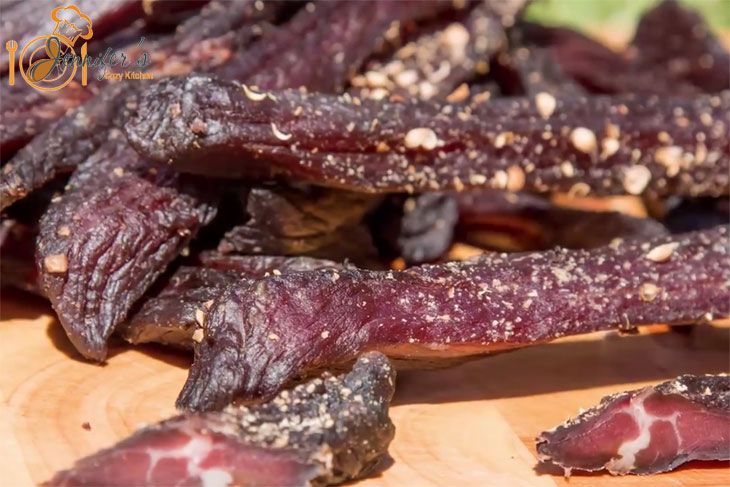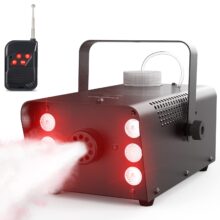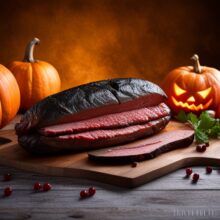Venison Jerky Drying Time

The drying time of venison jerky is dependent on many factors, including the cut of meat, the thickness of the strips, and the dehydration temperature. It is best to experiment with different combinations of these to get the optimal dehydration time for your specific jerky process.
Drying venison jerky is a great way to preserve food for future use. Keeping it properly dried helps prevent spoilage, maintains flavor and quality, and reduces the risk of mold growth.
How long should I dry my jerky?
When you make jerky, it is important to dry it properly. Dehydration can affect the shelf life of the jerky and could also kill pathogens in the meat.
The USDA Meat and Poultry Hotline recommends that you preheat the meat to 160 degrees Fahrenheit (71 degrees Celsius) before drying it. This step is critical in killing hazardous germs that could cause illnesses, such as Salmonella and E. coli O157:H7, in homemade jerky.
For best results, slice venison into strips no thicker than 1/4-inch thick. These slices should be evenly spaced on trays or cake racks in an even mosaic pattern.
Once you’ve done this, you can now place the venison strips in your dehydrator or oven and begin drying. Use a metal stem thermometer to check the temperature of your jerky strips.
Venison jerky is one of the most popular meats to make jerky with. It’s easy to do and tastes great! It is also very versatile. It can be made with a dehydrator, oven or smoker.
What factors affect the drying time?
Drying time is one of the most important steps in preparing venison jerky. Under-drying jerky can result in a tough, hard jerky that won’t last long.
Under-drying can also lead to bacterial growth, which may cause foodborne illness. To limit bacterial growth, meat should be dried quickly and at low temperature without using high heat, which would cook the meat.
Venison jerky should be dried in a dehydrator that can maintain a constant temperature of 145-155 degrees Fahrenheit for at least four hours. This is sufficient to kill most pathogens.
How can I ensure my jerky is properly dried?
While venison is an excellent meat for making jerky, it can be tricky to ensure it’s properly dried. Raw meats, such as venison and bear, are often contaminated with parasites that cause disease, so they need to be treated before drying.
Unlike beef, which can be marinated in cold water, venison and other game meats should be heated up to 160 degrees before dehydrating to kill any bacteria that may be present. Then, a proper jerky recipe can be followed and the meat should dry quickly.
To test for dryness, hang strips on a wire rack and let them cool at room temperature. When a strip cracks but does not break when it is bent, the jerky is adequately dry.
Tips
There are a few things you can do to ensure your venison jerky is properly dried. First, you can use a sharp hunting knife to slice the strips into thin, even pieces.
Once the strips are cut, they should be placed on dehydrator trays that are not touching or overlapping. You should also leave at least 1 inch (2.5 cm) of space between each strip so air can circulate easily and dry the venison.
After a few hours in the dehydrator, test the jerky to ensure it is completely dried. Remove one strip and bend it; it should crack but not break when bent.
Related Articles
How to Prepare Venison For Jerky
Venison Jerky – Why Use a Dehydrator?
Popular Venison Jerky Seasonings
How to Make the Best Venison Jerky Recipe
Adjusting Venison Jerky Temperature
Read more great BBQ articles at Bob’s BBQ Secrets


